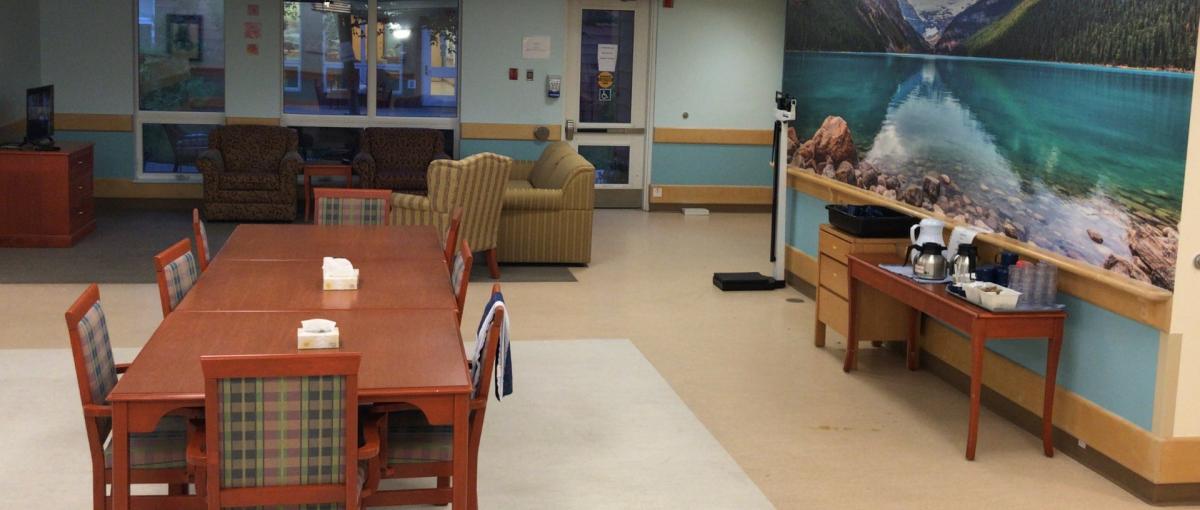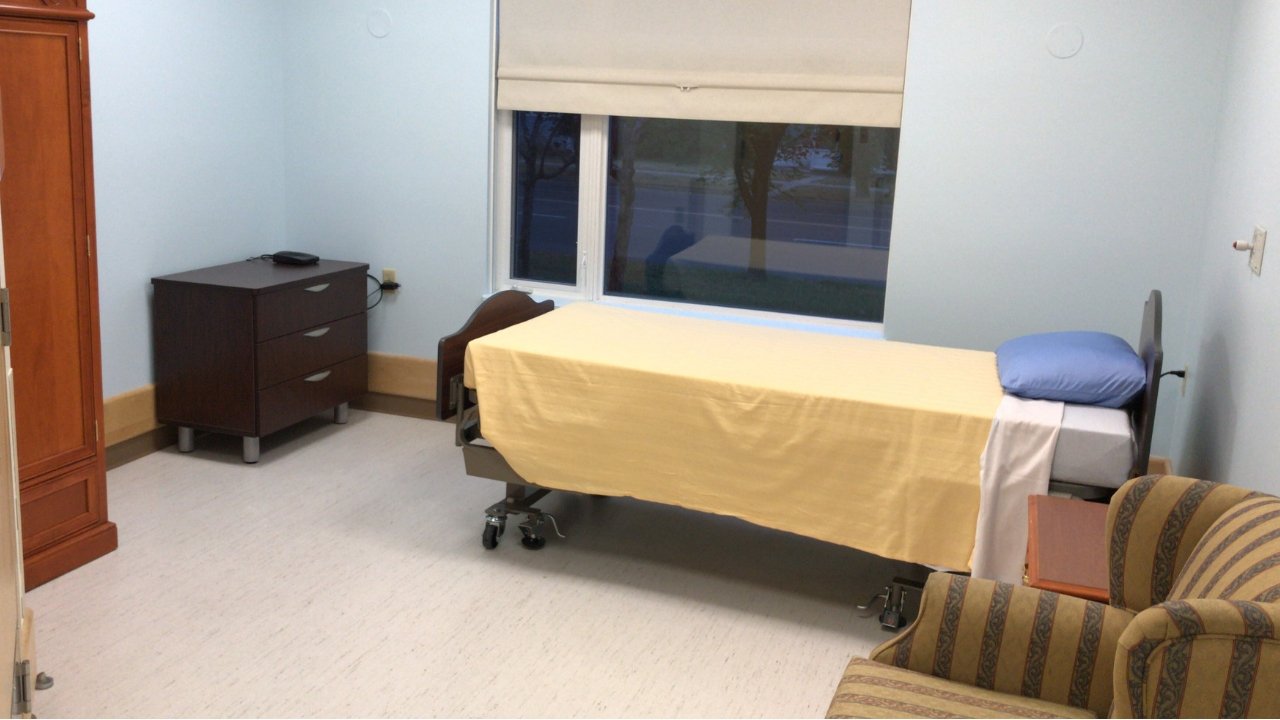Vulnerable residents find a home in long-term care
People with history of mental illness and addictions settle in at St. Michael’s Health Centre

October 15, 2018
By Brenton Driedger, Social Media and Storytelling Advisor, Covenant Health
Sherry was struggling to live on her own. She was drinking alcohol, which clashed with her medications to manage her schizoaffective bipolar diagnosis. She wasn’t eating properly, cleaning or managing her finances.
“She was harming herself and she wasn’t taking her medications properly,” says Mark, 24, Sherry’s son and guardian.* “She had quite a serious suicide attempt and then she was hospitalized in psychiatry for a year.”
The psychiatric care helped stabilize Sherry, 59. But Mark knew she couldn’t return home. And angry outbursts meant she wouldn’t be a fit for a group home.
“She is a really funny and lovely human being. But she needs a little bit of extra care.”
Sherry was admitted to a new 24-bed complex mental health unit at St. Michael’s Health Centre in Lethbridge shortly after it opened its doors to residents in May. It provides long-term care for people with significant histories of mental illness and addictions who are unable to get the needed care at home or in other community options. Staff ratios are higher than in other long-term care homes, and caregivers have more training to deal with behaviours.
“It’s less physical care and more psychological, psychiatric support,” says Llan Baceda, Program Manager with St. Michael’s Health Centre. “They’re commonly people who have failed at every other housing placement option available to them.”
Staff at St. Michael’s help residents carry out their daily routines of dressing, eating and taking medications. But Mark is even more impressed with how staff help his mom manage her emotions, redirecting her to her room and letting her blow off steam in her own space, often by throwing her shoes.
“They’re pretty soft and she throws them at the ground,” says Mark. “It’s a good way for her to vent. The staff are awesome at that.”
But what Mark values most is the collaborative approach to resident care. In his mom’s case, they worked together to balance her love of jujubes and chips with her need to manage her Type 2 diabetes and high blood pressure.
“When she has snacks in her room, she tends to eat them all at once. She has a hard time pacing herself with them,” says Mark.
At first, they agreed that Mark would buy snacks in bulk and staff would keep them behind the counter. But Sherry wanted more control, so they decided to give Sherry a weekly allowance and let her buy her own goodies to keep in her room.
“She goes to the nearby pharmacy with a staff member and buys candies as she feels she needs,” says Mark. “And she doesn’t buy very many because she spends most of her money on cigarettes.”

Rooms come furnished, and residents are encouraged to hang pictures and bring personal items to make it feel like home.
Complex mental health facilities like this are rare. Llan says the unit at St. Michael’s is modelled after a similar one at the Edmonton General Continuing Care Centre. Residents range in age from their early 50s to early 70s. Many of them have spent a long time in acute care or in another care facility.
“A lot of time they haven’t had their own space,” says Shayna Beers, Registered Nurse with St. Michael’s. “They’ve always been either moved from facility to facility or they’ve lived on the streets. Fighting for their one backpack was an everyday affair. When they come here, they have their own room and we try to give them as much flexibility in their schedules as possible so they feel like you do when you go home.”
The unit design focuses on reducing the likelihood of self-harm, with unbreakable windows and anti-ligature hardware—hooks that don’t hold more weight than a towel or grab bars that don’t have space to tie anything to.
With higher staff-to-resident ratios, there are more people around to manage behaviours, and residents get more one-on-one time during daily recreational activities. For Sherry, that means enjoying colouring, reading, baking and getting her nails painted.
“It’s great, I’m so glad it exists,” says Mark.
His mom is eager to have more independence, he says. And he’s started talking to staff about potentially transitioning his mom to a group home where she could take on more responsibility.
“She’s actually been doing so well there that it has gotten to the point where we’re questioning whether she needs as much care as they offer.”
* Mark and Sherry are pseudonyms. We are using them to respect the family’s request for privacy.